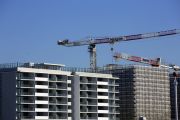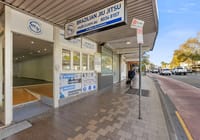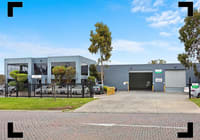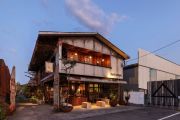
Singapore’s CapitaLand aims high with $20b funds target in Australia
The Australian arm of Singaporean investment giant Capitaland aims to more than double its local funds under management to pass $20 billion over the next four years, with much of that hoped-for uplift likely to come from M&A style deals.
With neat timing, Capitaland has brought on board two former investment bankers to steer towards that goal, with Angelo Scasserra as its chief executive and Rahul Bharara as chief investment officer.

The pair worked together previously at Credit Suisse and then at local investment bank Barrenjoey. Their shared resume includes running real estate debt deals – another experience that will come in handy with Capitaland completing its takeover of local private lender Wingate and its $2 billion loan book this month.
The buy-out of Wingate also brings to Capitaland a whole new source of funds through the Melbourne-based non-bank lender’s network of high-net-worth individuals.
Back in Singapore, Capitaland is one of the biggest property fund managers in the region with around $140 billion in funds under management though positions in seven listed property trusts and a stable of unlisted funds. Its target is to increase that tally of managed funds to around $230 billion by 2028.
For its Australian arm, which has around $9 billion in funds under management, the growth could be even greater. The local arm contributes around 7 per cent of Capitaland’s global pie currently. The aim is to increase that to around 10 per cent.
Scasserra and Bharara readily acknowledge they have a big job ahead but in their favour, they say, is the backing of the Capitaland balance sheet, its $5 billion war chest of liquidity, and an advantageous cost of capital.
“It’s not growth for growth’s sake,” Scasserra told The Australian Financial Review. “A key strategy is bringing differentiated products to our investor base.
“That means that we’re going to be focusing on alternatives where institutions aren’t well exposed, or don’t have sufficient exposure, and growing our existing product verticals as well.
“The key thing that we can do within Australia is grow through our existing portfolio – the things that we’re in – but also the M&A and acquisition side is probably the way that we’re actually going to move the needle.”
Capitaland’s Australian portfolio is already diverse: CBD office towers in Sydney and Melbourne; office blocks in suburban business parks; and logistics facilities along the eastern seaboard.
Another big play for CapitaLand comes through its Ascott hospitality business, which both owns and operates a range of brands such as Quest, Citadines, Oakwood and Vertu.
Self-storage facilities, rental accommodation – such as student accommodation, co-living and build-to-rent – as well health-related facilities such as medical clinics will all be on the radar for Scasserra and Bharara as part of the expansion strategy.
“There could be private fund managers – away from the listed sphere – that have grown in a new or emerging sector, and maybe added $1 billion, $2 billion of assets under management,” Scasserra said.
“But they’re tending to plateau at that level. Maybe they’ve raised money from the local market, from high-net-worths. [But] taking the next step to then grow to $4 or 6 billion, yeah, might require an institutional partner.”
Bharara extends the point, noting that growth can be achieved through a variety of means, beyond traditional M&A or steady accumulation, asset by asset. Capital partnering is one option, as well as buying into existing platforms.
As well, private credit for real estate in the Australian market has so far been dominated by lending to residential projects. But globally, there is just as much opportunity in commercial property for private credit, another potential growth area for Capitaland in Australia, according to Bharara. And then there is the boost still to come from falling rates, he said.
“As cost of capital improves, you might find … a lot more projects become feasible,” he said.
“But that doesn’t mean necessarily people have all the equity that they need to satisfy conditions for traditional banking finance. So there’s always an opportunity set on the private lending side. You don’t have to look much further than what’s happened in Europe and the US.
“Because Australia has been so far ahead of the curve on the residential construction financing, where we lack is around the commercial real estate sector. That is a great opportunity for us.”











